Chicken Care Calendar - Looking after Chickens Month by Month

Chicken Care for January
This may be one of the
coldest months of the year, but January is one of the
most important if you
keep chickens.
This is the month when you need to go through your flock and pick out the chickens that are either undersized and not performing to expectations. Once you have dispatched these, the pick of your poultry are then placed in the breeding pens with your best cocks.
If you are mating poultry you need to get the ratio of cocks to hens right. If you are mating heavy chicken breeds then you will need 1 cock for 5-7 hens. If you are mating light chicken breeds, then you will need 1 cock for 6-8 hens. However, this is a guide only. You may find that your cocks with unlimited access to the outside may be able to mate more hens than the numbers given.
Watch your roosters to see if they are good with the hens and if they will readily mate with the hens. If they don't, and/or bully your hens instead, remove them from the brooding pens and replace them with others.
Make sure that your breeding stock is not too old. A cockerel mated to 2 year old hens, or an older, but vigorous rooster mated to pullets will produce robust chickens.
During this month you need to make sure that your breeding stock is getting a good diet full of protein. Cut bone, meat scraps or pea meal should be part of their diet.
If the weather is too bad for the chickens to go outside, make sure that their coops are dry, have plenty of clean litter and that they have enough scratch in the straw to keep them happily amused while confined.
This is the month when you need to go through your flock and pick out the chickens that are either undersized and not performing to expectations. Once you have dispatched these, the pick of your poultry are then placed in the breeding pens with your best cocks.
If you are mating poultry you need to get the ratio of cocks to hens right. If you are mating heavy chicken breeds then you will need 1 cock for 5-7 hens. If you are mating light chicken breeds, then you will need 1 cock for 6-8 hens. However, this is a guide only. You may find that your cocks with unlimited access to the outside may be able to mate more hens than the numbers given.
Watch your roosters to see if they are good with the hens and if they will readily mate with the hens. If they don't, and/or bully your hens instead, remove them from the brooding pens and replace them with others.
Make sure that your breeding stock is not too old. A cockerel mated to 2 year old hens, or an older, but vigorous rooster mated to pullets will produce robust chickens.
During this month you need to make sure that your breeding stock is getting a good diet full of protein. Cut bone, meat scraps or pea meal should be part of their diet.
If the weather is too bad for the chickens to go outside, make sure that their coops are dry, have plenty of clean litter and that they have enough scratch in the straw to keep them happily amused while confined.
Chicken Care for February
February is the month that
people will be wanting eggs that they can incubate themselves.
If you
are incubating your own eggs, go easy on the moisture content. The
average time for chicken eggs to hatch is 20-22 days, with the average
being 21 days.
If you are incubating other poultry, then the number of days differ:
Incubation time for ducks: 28-30 days
Incubation time for geese: 28-31 days
Incubation time for turkeys: 28-30 days
Incubation time for guinea fowl: 26-28 days
Incubation time for pea fowl: 28-30 days
Continue to look after your breeding stock well, giving them a good protein diet as well as making sure that they have access to grit and shell at all times.
Unfortunately February is a rainy month, and you want to try and keep your chickens as dry as possible to minimize disease.
Continue to collect the eggs and place them large end down in boxes and covered with bran to keep them a little longer than normal. Or, you can do what I do. I grease them well with butter. And then I plac thew small side down in a box layered with salt. Fill up the gaps with salt and your eggs should be good for a year.
Check on your brooding hens daily for health and disease.
If you are incubating other poultry, then the number of days differ:
Incubation time for ducks: 28-30 days
Incubation time for geese: 28-31 days
Incubation time for turkeys: 28-30 days
Incubation time for guinea fowl: 26-28 days
Incubation time for pea fowl: 28-30 days
Continue to look after your breeding stock well, giving them a good protein diet as well as making sure that they have access to grit and shell at all times.
Unfortunately February is a rainy month, and you want to try and keep your chickens as dry as possible to minimize disease.
Continue to collect the eggs and place them large end down in boxes and covered with bran to keep them a little longer than normal. Or, you can do what I do. I grease them well with butter. And then I plac thew small side down in a box layered with salt. Fill up the gaps with salt and your eggs should be good for a year.
Check on your brooding hens daily for health and disease.
Chicken Care for March
If you are keeping
heavier chicken breeds such as the American breeds, or Asiatic crosses,
then the main supply of pullets for the following winter's laying
should be hatched during the month of March. March is one of the best
months for hatching chickens.
When feeding your chickens remember that just like you, they get fed up of eating the same thing, day in and day out. Change their food, sometimes offering them a warm mash, and other times a dry mash. It is better to feed them a little, often rather than feeding them too much in one sitting.
Chickens will benefit from greens and fresh vegetables as part of their daily diet. The older chickens will also do well on a daily portion of boiled barley. Add linseed meal to their daily rations, along with some ground oats and middlings for good feathering, and green cut bone will give them stamina, a good growth rate, and will help in keeping up the laying rate.
Keep an eye on your breeding stock making sure that that breeding cocks are still on form. If any of your stock look off-color and you can't find a cause, feed them a little cod-liver oil, and they usually perk up.
When feeding your chickens remember that just like you, they get fed up of eating the same thing, day in and day out. Change their food, sometimes offering them a warm mash, and other times a dry mash. It is better to feed them a little, often rather than feeding them too much in one sitting.
Chickens will benefit from greens and fresh vegetables as part of their daily diet. The older chickens will also do well on a daily portion of boiled barley. Add linseed meal to their daily rations, along with some ground oats and middlings for good feathering, and green cut bone will give them stamina, a good growth rate, and will help in keeping up the laying rate.
Keep an eye on your breeding stock making sure that that breeding cocks are still on form. If any of your stock look off-color and you can't find a cause, feed them a little cod-liver oil, and they usually perk up.
Chicken Care for April
April can still be used
for hatching the heavier breeds. Eggs from those chicken
breeds that
aren't good brooders, such as the Anconas, Leghorns and Minorcas can
all be placed in the incubators now.
This is important to make sure that these birds will be laying before the winter sets in. These are your profitable egg layers, especially the Leghorns, and are always sought after by those starting off with chickens, or those wanting to replace existing chicken stocks.
Because you could end up with a lot of chickens hatching this month, it is important to remember that over-crowding has to be avoided at all costs. Disease can easily take hold during April. Therefore as soon as the sitting hens have finished hatching their chicks their brooding quarters should be washed out with ammonia or washed with quicklime containing a little paraffin oil, and try and get as much sun into the area as possible.
Don't keep mixed-aged poultry together. This is inviting disaster from a health point of view. The cockerels and pullets of earlier batches should be kept together, the older poultry on their own, and the chicks in a different area altogether.
Any surplus eggs can be hatched and sold off during April as day old chickens.
This is important to make sure that these birds will be laying before the winter sets in. These are your profitable egg layers, especially the Leghorns, and are always sought after by those starting off with chickens, or those wanting to replace existing chicken stocks.
Because you could end up with a lot of chickens hatching this month, it is important to remember that over-crowding has to be avoided at all costs. Disease can easily take hold during April. Therefore as soon as the sitting hens have finished hatching their chicks their brooding quarters should be washed out with ammonia or washed with quicklime containing a little paraffin oil, and try and get as much sun into the area as possible.
Don't keep mixed-aged poultry together. This is inviting disaster from a health point of view. The cockerels and pullets of earlier batches should be kept together, the older poultry on their own, and the chicks in a different area altogether.
Any surplus eggs can be hatched and sold off during April as day old chickens.
Chicken Care for May
Eggs from the lighter
breeds can be hatched in May. If you are raising chickens
for the
table, then this is also the month to do so.
Add some dry bone meal to the food for pullets and cockerels that are going to be kep for breeding stock in the future.
Because the temperatures are heating up less artificial heating is needed during the daytime in the brooders.
Give the eggs in the incubators more airing and allow the broody hens 15 -20 minutes daily to get out and about, although some breeds, like the Rhode Island Reds may not even want to leave the nests.
Don't forget to watch the lice at this stage as the weather warms, and make sure that the nests are regualary treated with lice powder. A sprinkling of powdered sulfur over the nests also helps keeping lice and mites down. If you have pine trees in your gardens use pine needles in the nesting boxes. Pine needles will also keep lice and mites at bay.
Add some dry bone meal to the food for pullets and cockerels that are going to be kep for breeding stock in the future.
Because the temperatures are heating up less artificial heating is needed during the daytime in the brooders.
Give the eggs in the incubators more airing and allow the broody hens 15 -20 minutes daily to get out and about, although some breeds, like the Rhode Island Reds may not even want to leave the nests.
Don't forget to watch the lice at this stage as the weather warms, and make sure that the nests are regualary treated with lice powder. A sprinkling of powdered sulfur over the nests also helps keeping lice and mites down. If you have pine trees in your gardens use pine needles in the nesting boxes. Pine needles will also keep lice and mites at bay.
Chicken Care for June
June is the month of
long days and short nights which means more work for the chicken
keeper.
Examine your chickens for ticks, especially the young pullets and cockerels. You will usually find ticks on the head and neck of the chickens. You can kill ticks with a couple of drops of carbolized oil.
The chickens should also be checked for lice every couple of days. A good insect powder for poulty can be used here. However, I prefer to treat their nests with a sprinkling of tea tree oil. You can also put a couple of drops on the chickens, but only where you know they won't be able to get at it with their beaks.
Litter in the coops and nesting boxes should be renewed often.
Keep a sharp lookout the red mite as this is a most difficult chicken pest to get rid of once it takes hold.
Go through your stock and dispatch any hens that are too old to be productive, and any cocks that are past their prime. Any cocks that you want to keep can be moved to the cockerel pens.
The pullets should be given as much space as possible to run around in, and if you can move them into pens that have access to open fields, so much the better.
Examine your chickens for ticks, especially the young pullets and cockerels. You will usually find ticks on the head and neck of the chickens. You can kill ticks with a couple of drops of carbolized oil.
The chickens should also be checked for lice every couple of days. A good insect powder for poulty can be used here. However, I prefer to treat their nests with a sprinkling of tea tree oil. You can also put a couple of drops on the chickens, but only where you know they won't be able to get at it with their beaks.
Litter in the coops and nesting boxes should be renewed often.
Keep a sharp lookout the red mite as this is a most difficult chicken pest to get rid of once it takes hold.
Go through your stock and dispatch any hens that are too old to be productive, and any cocks that are past their prime. Any cocks that you want to keep can be moved to the cockerel pens.
The pullets should be given as much space as possible to run around in, and if you can move them into pens that have access to open fields, so much the better.
Chicken Care for July
Most of what you have
been doing during the month of June, will apply here too.
It is still
very necessary to keep on top of the lice, mite and tick population,
and avoid overcrowding both during the day and at night.
As the weather heats up always make sure that there is plenty of water available and that your chickens have access to shade during the heat of the day.
As the weather heats up always make sure that there is plenty of water available and that your chickens have access to shade during the heat of the day.
Chicken Care for August
Continue to separate
your pullets from the old hens during August. Although
some of your pullets will be
laying now, their eggs will be small, and won't be able to be used for
sale at this stage. You will have to be patient and wait until the eggs
increase in size before you can sell them commercially.
Chicken Care for September
September is the month to go
through your stock again and weed out those that you will be keeping
for the following breeding season.
You will also need to go through the stock to see which birds will be selected as table birds.
Your chickens will be moulting this month. They should be given a little powdered sulfur in their soft mash to help them with the regrowth of their feathers.
Set good, quality table bird eggs now so that you will be able to sell the offspring to be ready for Christmas.
Get in a good stock of peat moss, or collect a large amount of autumn leaves and allow them to dry out completely to use for winter littering. I use oak leaves in my chicken house, and after the chickens have scratched through it for a couple of months, I add it to my compost heap for my vegetables at a later stage.
It is a lot cheaper than buying in straw or hay, especially if you have lots of oak trees on the property like I have.
You will also need to go through the stock to see which birds will be selected as table birds.
Your chickens will be moulting this month. They should be given a little powdered sulfur in their soft mash to help them with the regrowth of their feathers.
Set good, quality table bird eggs now so that you will be able to sell the offspring to be ready for Christmas.
Get in a good stock of peat moss, or collect a large amount of autumn leaves and allow them to dry out completely to use for winter littering. I use oak leaves in my chicken house, and after the chickens have scratched through it for a couple of months, I add it to my compost heap for my vegetables at a later stage.
It is a lot cheaper than buying in straw or hay, especially if you have lots of oak trees on the property like I have.
Chicken Care for October
Begin feeding your
pullets more generously during October. Include green cut
bone as often
as possible, daily is best. And if you can let them into a spent
vegetable garden at the end of the month they will definitely benefit
from this, as well as picking out any unwelcome insects.
Dry bone meal can still be used and piece of sulphate of iron, the size of a hazelnut placed in a quart of water will be good for them. Also give them apple cider vinegar in their water for good health.
Give all chicken coops another thorough cleaning with ammonia, or quicklime and paraffin oil.
Dry bone meal can still be used and piece of sulphate of iron, the size of a hazelnut placed in a quart of water will be good for them. Also give them apple cider vinegar in their water for good health.
Give all chicken coops another thorough cleaning with ammonia, or quicklime and paraffin oil.
Chicken Care for November
Your pullets are your
investment during November, so it is wise to continue to feed them well.
Continue feeding them green bone, and also give them cracked corn and
buckwheat in the afternoons. It will also help keep them warm.
Keep the chicken houses dry and clean, and place scratch deep in the litter on the days that you may have to confine them due to bad weather. It pays to keep your chickens dry as any dampness will result in a drop of egg production.
During November you can add pea or bean meal to their diet, and linseed meal is also highly beneficial if you live in an area like I do where you have a lot of cold, damp weather.
The fall chickens must be given a lot of vegetable and animal food, and be kept just as warm and clean as the layers. Give them a good protein diet, house well and market for good Christmas orders.
Keep the chicken houses dry and clean, and place scratch deep in the litter on the days that you may have to confine them due to bad weather. It pays to keep your chickens dry as any dampness will result in a drop of egg production.
During November you can add pea or bean meal to their diet, and linseed meal is also highly beneficial if you live in an area like I do where you have a lot of cold, damp weather.
The fall chickens must be given a lot of vegetable and animal food, and be kept just as warm and clean as the layers. Give them a good protein diet, house well and market for good Christmas orders.
Chicken Care for December
Those chickens
that are
going to be dispatched this month for Christmas can be given skim milk,
or buttermilk and ground oats to finish them.
Now look ahead for the New Year and see where you can make improvements on what you did this year to improve not only your stock, but your profits as well!
Now look ahead for the New Year and see where you can make improvements on what you did this year to improve not only your stock, but your profits as well!

Did you find this page helpful?
Sharing is a way of saying, "Thanks!"
Follow Us and Keep Up to Date
Don't miss out on our latest news and articles. Sign up for our free monthly e-zine!
OTHER SECTIONS OF INTEREST
 Self
Sufficient Living Chicken eBooks and
Information
Self
Sufficient Living Chicken eBooks and
Information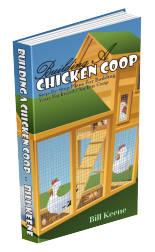
Click Here

Click Here
Make an Incubator

Click Here

Click Here
Raising Chickens Bonanza

Click Here
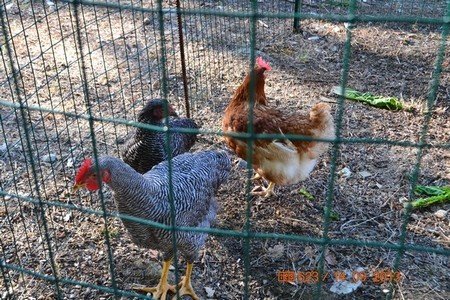



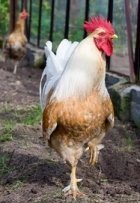
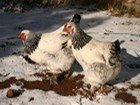
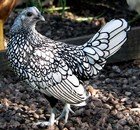
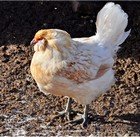
New! Comments
Do you have something of value to add? Leave me a comment in the box below.